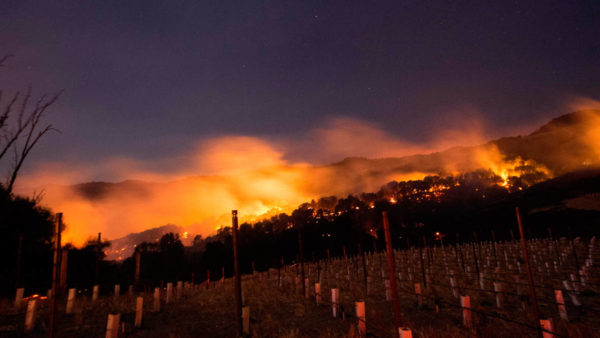Something New: Climate Change & Wine

It’s been a while since I wrote anything, but I’ve been wanting to add new depth to my blog by talking about sustainability. For the past few years, climate change has dominated the headlines and I am frustrated by what’s happening. Though we may enjoy 50 degrees F weather in January after a subzero weekend, these crazy swings are disastrous for the environment. Why am I concerned about plants? Simply put, this is our food we’re talking about. AND WINE. Low crop yields means food shortages, and economists predict that shortages will worsen the gap between the rich and poor. The inequalities in our lives are bad enough already; can you imagine the world when it’s even worse?
Last year, I had a chance to talk to winemakers from the East Coast and West Coast about the challenges they faced with the 2018 harvest. As most of us know, the West Coast wineries have been badly hurt by severe droughts and fires over the past two years. Most of the wineries suffered little damage, but some were burnt to ashes – at least 27 wineries were affected by the fires. However, wine experts caution that some of the worst damage is not visible to the eye. Most West Coast wineries are vulnerable to smoke taint. (For non-experts, wine is infected by smoke chemicals during the fermentation of grapes from vines exposed to fire and smoke.) Even the wineries that escaped the fires can end up losing the whole year’s production.
While West Coast wineries suffered from too little rain, East Coast producers suffered from too much! Like everyone else in New York City, I was miserable during the last year’s summer’s record heat and humidity—it felt like living in a dank gas station restroom without ventilation for the entire month of August. But the vines had it a lot worse. Plants grow by drawing water from the soil, bringing along all necessary nutrients in turn. Their leaves have tiny holes that take in or sweat out water depending on their needs. However, last summer’s heavy humidity basically clogged these holes. Because the plants had absorbed so much from the air, they didn’t pull additional water from the ground, which meant they weren’t getting the nutrients they need. Without enough food, vines couldn’t produce enough grapes, and those they did produce were small and had little flavor. To make things worse, heavy, sustained rains soaked the region a few days before the harvest, yielding waterlogged grapes that had almost no flavor. In sum, last year was horrible for wine production in the East as well as the West.
These unpredictable events, known as “extreme weather”, are a problem the world over. We’ve been seeing something similar in wine regions of France and other parts of Europe. Unfortunately, scientists predict that the weather will become even more extreme and unpredictable as climate change grows worse.
Back in college, I was drawn to study Viticulture & Enology because wine tells the complex story of the year’s harvest. “Terroir” refers to the climates and soils of the vineyard and how they shape viticulture and enology practices. The vintage is about the quality of wine of a specific year, and since wine is so dependent on the climate, wine experts talk about the weather to describe the success of vintage. (You may have heard wine experts saying, “2009 was the most optimal year for Bordeaux because it had just right amount of sunshine without any rain, etc”).
Wine is a unique agricultural product that reflects the climate, and I want to use it as a lense to talk about climate change and its impact – not in the distant future, but right now. Although climate change may seem like an abstraction, it is already changing the world in alarming ways. As in past posts, I will continue to write about winery visits, but I will add emphasis on how climate change is affecting the wine regions. Also, I will from time to time write about broader food and beverage industry trends, including how the industry is trying to solve problems of waste, sustainability and more.
Stay tuned for more!
*Featured photo credit: Josh Edelson/AFP/Getty Images.